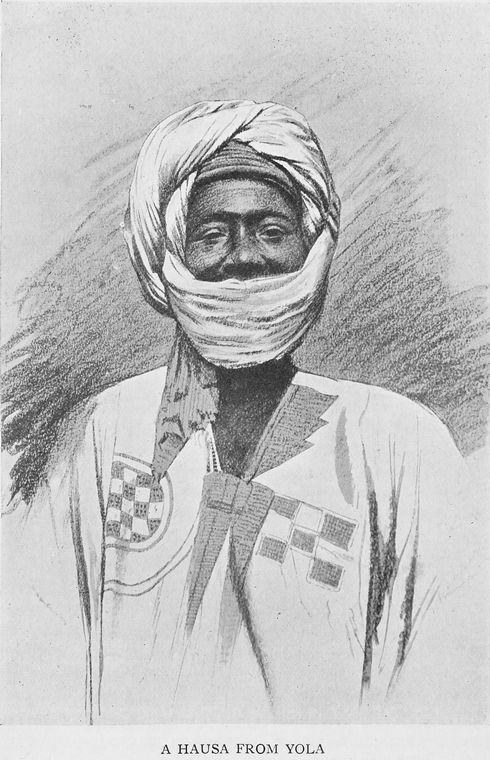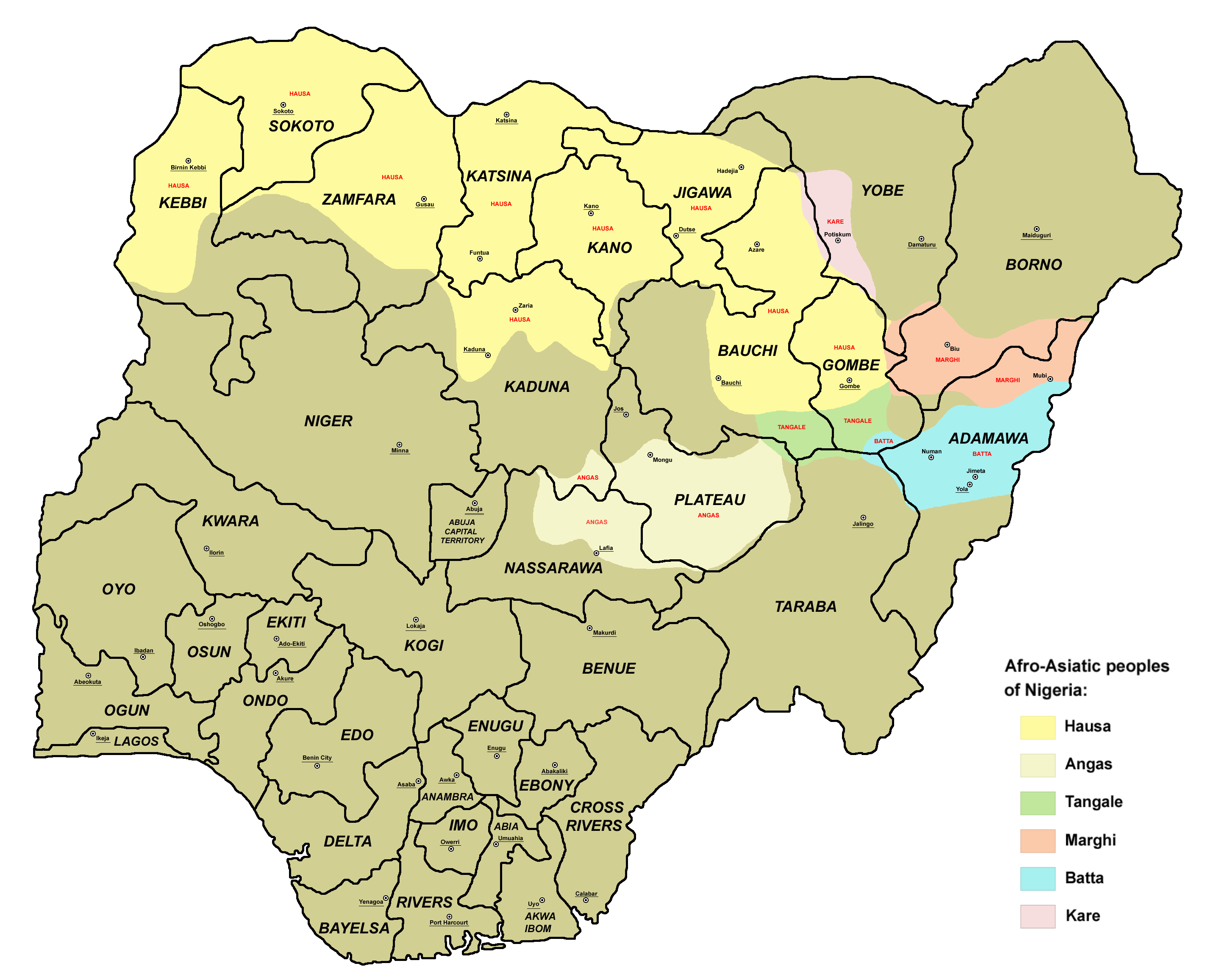|
Woga Language
Lamang (Laamang) is an Afro-Asiatic language The Afroasiatic languages (also known as Afro-Asiatic, Afrasian, Hamito-Semitic, or Semito-Hamitic) are a language family (or "phylum") of about 400 languages spoken predominantly in West Asia, North Africa, the Horn of Africa, and parts of the ... cluster of Nigeria. Blench (2006) classifies the Woga variety as a separate language.Blench, 2006The Afro-Asiatic Languages: Classification and Reference List(ms) Varieties Blench (2019) lists these language varieties as are part of the Lamang cluster. *Zaladva (Zәlәdvә) (Lamang North) *Ghumbagha (Lamang Central) *Ghudavan (Lamang South) References Biu-Mandara languages Languages of Nigeria {{Nigeria-stub ... [...More Info...] [...Related Items...] OR: [Wikipedia] [Google] [Baidu] |
Nigeria
Nigeria, officially the Federal Republic of Nigeria, is a country in West Africa. It is situated between the Sahel to the north and the Gulf of Guinea in the Atlantic Ocean to the south. It covers an area of . With Demographics of Nigeria, a population of more than 230 million, it is the List of African countries by population, most populous country in Africa, and the List of countries and dependencies by population, world's sixth-most populous country. Nigeria borders Niger in Niger–Nigeria border, the north, Chad in Chad–Nigeria border, the northeast, Cameroon in Cameroon–Nigeria border, the east, and Benin in Benin–Nigeria border, the west. Nigeria is a Federation, federal republic comprising 36 States of Nigeria, states and the Federal Capital Territory, Nigeria, Federal Capital Territory, where its capital, Abuja, is located. The List of Nigerian cities by population, largest city in Nigeria by population is Lagos, one of the largest List of largest cities, metr ... [...More Info...] [...Related Items...] OR: [Wikipedia] [Google] [Baidu] |
Borno State
Borno is a States of Nigeria, state in the North East (Nigeria), North-East geopolitical zone of Nigeria. It is bordered by Yobe State, Yobe to the west, Gombe State, Gombe to the southwest, and Adamawa State, Adamawa to the south while its eastern border forms part of the national Cameroon-Nigeria border, border with Cameroon. Its northern border forms part of the national Niger–Nigeria border, border with Niger and its northeastern border forms all of the national Chad–Nigeria border, border with Chad. It is the only Nigerian state to border up to three countries. It takes its name from the historic Borno Emirate, emirate of Borno, with the emirate's old capital of Maiduguri serving as the capital city of Borno State. The state was formed in 1976 when the former North-Eastern State was broken up. It originally included the area that is now Yobe State, which became a distinct state in 1991. Borno is the List of Nigerian states by area, second largest in area of the States ... [...More Info...] [...Related Items...] OR: [Wikipedia] [Google] [Baidu] |
Adamawa State
Adamawa is a States of Nigeria, state in the North East (Nigeria), North-East geopolitical zone of Nigeria, bordered by Borno State, Borno to the northwest, Gombe State, Gombe to the west, and Taraba State, Taraba to the southwest while its eastern border forms part of the national Cameroon-Nigeria border, border with Cameroon. It takes its name from the historic Adamawa Emirate, emirate of Adamawa, with the emirate's old capital of Yola, Adamawa, Yola serving as the capital city of Adamawa State. The state was formed in 1991 when the former Gongola State was broken up into Adamawa and Taraba State, Taraba states. The state is one of the most heterogeneous in Nigeria, having over 100 indigenous ethnic groups. Of the States of Nigeria, 36 states, Adamawa is the List of Nigerian states by area, eighth largest in the area, but the List of Nigerian states by population, thirteenth least populous with an estimated population of about 4.25 million as of 2016. Geographically, the state ... [...More Info...] [...Related Items...] OR: [Wikipedia] [Google] [Baidu] |
Latin Alphabet
The Latin alphabet, also known as the Roman alphabet, is the collection of letters originally used by the Ancient Rome, ancient Romans to write the Latin language. Largely unaltered except several letters splitting—i.e. from , and from —additions such as , and extensions such as letters with diacritics, it forms the Latin script that is used to write most languages of modern Languages of Europe, Europe, languages of Africa, Africa, languages of the Americas, the Americas, and Languages of Oceania, Oceania. Its basic modern inventory is standardized as the ISO basic Latin alphabet. Etymology The term ''Latin alphabet'' may refer to either the alphabet used to write Latin (as described in this article) or other alphabets based on the Latin script, which is the basic set of letters common to the various alphabets descended from the classical Latin alphabet, such as the English alphabet. These Latin-script alphabets may discard letters, like the Rotokas alphabet, or add new ... [...More Info...] [...Related Items...] OR: [Wikipedia] [Google] [Baidu] |
Chadic Languages
The Chadic languages form a branch of the Afroasiatic language family. They are spoken in parts of the Sahel. They include 196 languages spoken across northern Nigeria, southern Niger, southern Chad, and northern Cameroon. By far the most widely spoken Chadic language is Hausa, a lingua franca of much of inland Eastern West Africa, particularly Niger and the northern half of Nigeria. Hausa is the only Chadic language with more than 1 million speakers. Composition Paul Newman (1977) classified the languages into the four groups which have been accepted in all subsequent literature. Further subbranching, however, has not been as robust; Roger Blench (2006), for example, only accepts the A/B bifurcation of East Chadic. Subsequent work by Joseph Lovestrand argues strongly that Kujarge is a valid member of East Chadic. The placing of Luri as a primary split of West Chadic is erroneous. Bernard Caron (2004) shows that this language is South Bauchi and part of the Polci cluster. A sug ... [...More Info...] [...Related Items...] OR: [Wikipedia] [Google] [Baidu] |
Biu–Mandara Languages
The Biu–Mandara or Central Chadic languages of the Afro-Asiatic languages, Afro-Asiatic family are spoken in Nigeria, Chad and Cameroon. A reconstruction of Proto-Central Chadic has been proposed by Gravina (2014). Languages Gravina (2014) Gravina (2014) classifies Central Chadic as follows, as part of a reconstruction of the proto-language. Letters and numbers in parentheses correspond to branches in previous classifications. The greatest changes are breaking up and reassigning the languages of the old Mafa branch (A.5) and Mandage (Kotoko) branch (B.1). *Central Chadic **South ***South ****Bata (A.8) *****Bata Proper: Bacama language, Bacama, Bata language, Bata, Fali of Mubi, Fali, Gude language, Gude, Gudu language, Gudu, Holma language, Holma (†), Jimi language (Cameroon), Jimi, Ngwaba language, Ngwaba (from A.1 Tera), Nzanyi language, Nzanyi, Sharwa language, Sharwa *****Tsuvan: Tsuvan language, Tsuvan, Zizilivakan language, Zizilivakan ****Daba (A.7) *****Daba Proper ... [...More Info...] [...Related Items...] OR: [Wikipedia] [Google] [Baidu] |
Wandala Languages
The Mandara Kingdom (sometimes called Wandala or the Kingdom of Medra) was an African kingdom in the Mandara Mountains of what is today Cameroon. The Mandara people are descended from the kingdom's inhabitants. History Tradition states that Mandara was founded shortly before 1500 by a female ruler named ''Soukda'' and a non-Mandarawa hunter named ''Gaya''. The kingdom was first referred to by Fra Mauro (in 1459) and Leo Africanus (in 1526); the provenance of its name remains uncertain. Medra is mostly likely the original name of Mandara, one letter being obliterated in Leo's Arabic notes. Leo acknowledges the Kingdom of Medra (Mandara) for their good governors and rulers. The inhabitants of Medra are rich and industrious people, visited often, and great lovers of justice and equity. The region of Medra is listed on the Africae Tabula Nova in 1570. Leo Africanus visited the Kingdom of Medra, located in the south. For the kingdom's first century of history, its rulers warr ... [...More Info...] [...Related Items...] OR: [Wikipedia] [Google] [Baidu] |
Afro-Asiatic Language
The Afroasiatic languages (also known as Afro-Asiatic, Afrasian, Hamito-Semitic, or Semito-Hamitic) are a language family (or "phylum") of about 400 languages spoken predominantly in West Asia, North Africa, the Horn of Africa, and parts of the Sahara and Sahel. Over 500 million people are native speakers of an Afroasiatic language, constituting the fourth-largest language family after Indo-European, Sino-Tibetan, and Niger–Congo. Most linguists divide the family into six branches: Berber (Amazigh), Chadic, Cushitic, Egyptian, Omotic, and Semitic. The vast majority of Afroasiatic languages are considered indigenous to the African continent, including all those not belonging to the Semitic branch (which originated in West Asia). The five most spoken languages are; Arabic (of all varieties) which is by far the most widely spoken within the family, with around 411 million native speakers concentrated primarily in West Asia and North Africa, the Chadic Hausa language with o ... [...More Info...] [...Related Items...] OR: [Wikipedia] [Google] [Baidu] |




